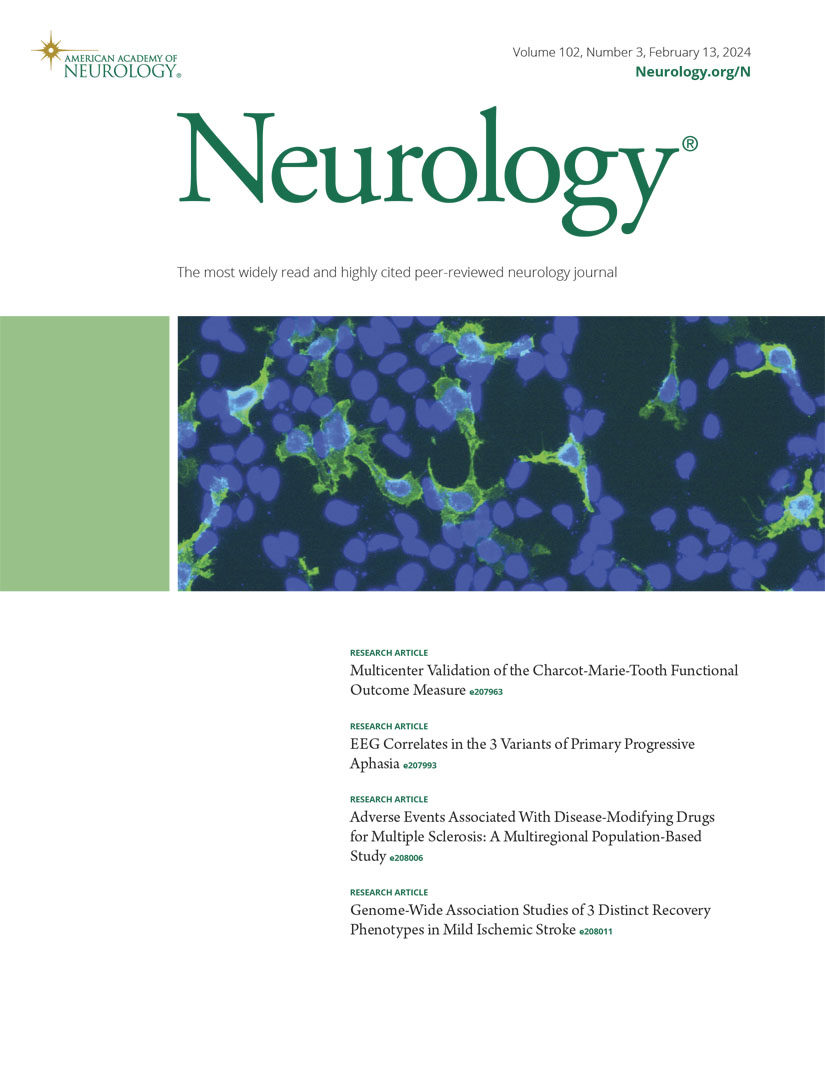一种评估区域实施移动中风装置成本效益的决策分析模型。
IF 7.7
1区 医学
Q1 CLINICAL NEUROLOGY
引用次数: 0
摘要
背景与目的移动卒中单元(msu)通过缩短从发病到治疗的时间,有可能改善缺血性卒中患者的功能结局。以前的成本效益研究对非大都市环境的推广能力有限,并且没有评估终身范围内的成本效益。我们的目标是开发一个区域适应性决策分析模型,以评估MSU实施的成本效益,并确定最佳调度方案。方法建立了一个具有可修改区域特定参数和调度特征的通用状态转移微观模拟模型,从医疗保健角度评估1年MSU实施的终身成本效益。我们以荷兰西南部(177万居民,1592平方公里,7个初级卒中中心,2个血栓切除卒中中心)为例。该模型的特定区域输入参数,如人口密度、年龄分布和驾驶时间,在邮政编码的水平上获得。我们根据年龄相关的中风风险和每个邮政编码的居民数量建立了一个疑似中风患者的虚拟队列。我们比较了MSU和紧急医疗服务(EMS)联合调度与单独调度EMS对居住在MSU集水区内的发病至报警时间<6小时的患者的影响。在基本情况分析中,MSU可以在上午7点到晚上11点之间从中央调度站点发送到研究区域的所有邮政编码。我们通过增量净货币收益(inmb)评估了长期成本效益。效果贴现率为1.5%,成本贴现率为4.0%。结果:在基本情况下,3628例疑似中风且发病至报警时间<6小时的患者(57.3%)中,有2080例(57.3%)使用了MSU,从而获得了399 (95% CI 384-414)个额外的质量调整生命年,节省了390万欧元(95% CI 350万- 430万欧元)的成本,iNMB为2390万欧元(95% CI 2280万- 2490万欧元)。MSU调度的集水区越小,成本效益就越高。讨论在我们地区,将MSU加入到疑似卒中患者的调度策略中有望具有成本效益。我们的模型有助于评估MSU在不同地区、环境和具有不同特征的情况下实施的成本效益。本文章由计算机程序翻译,如有差异,请以英文原文为准。
A Decision-Analytic Model to Evaluate Cost-Effectiveness of Regional Implementation of a Mobile Stroke Unit.
BACKGROUND AND OBJECTIVES
Mobile stroke units (MSUs) have the potential to improve functional outcome of ischemic stroke patients, through shortening onset-to-treatment times. Previous cost-effectiveness studies have limited generalizability to nonmetropolitan settings and did not evaluate cost-effectiveness over a lifetime horizon. We aimed to develop a regionally adaptable decision-analytic model, to evaluate cost-effectiveness of MSU implementation and to identify the optimal dispatch scenario.
METHODS
We developed a generalizable state-transition microsimulation model with modifiable region-specific parameters and dispatch characteristics to evaluate the lifetime cost-effectiveness from a health care perspective of 1-year MSU implementation. We used the southwest of the Netherlands (1,770,000 inhabitants, 1,592 km2, 7 primary stroke centers, 2 thrombectomy-capable stroke centers) as an example. Region-specific input parameters for the model, such as population density, age distribution, and driving times, were obtained at the level of postal codes. We developed a virtual cohort of suspected stroke patients based on age-dependent stroke risks and the number of inhabitants per postal code. We compared the combined dispatch of an MSU and emergency medical services (EMS) with dispatch of EMS alone for patients with onset-to-alarm time <6 hours, living within the catchment area of the MSU. In the base case analysis, the MSU could be dispatched to all postal codes in the study region between 7.00 am and 11.00 pm from a central dispatch site. We assessed the long-term cost-effectiveness through incremental net monetary benefits (iNMBs). Discount rates were 1.5% for effects and 4.0% for costs.
RESULTS
In the base case scenario, the MSU was dispatched to 2,080 of 3,628 patients (57.3%) with a suspected stroke and onset-to-alarm time <6 hours, resulting in a lifetime gain of 399 (95% CI 384-414) additional quality-adjusted life years, €3.9 million (95% CI €3.5 million-€4.3 million) cost savings, and an iNMB of €23.9 million (95% CI €22.8 million-€24.9 million). A smaller catchment area for MSU dispatch was associated with increased cost-effectiveness.
DISCUSSION
Adding an MSU to the dispatch strategy for suspected stroke patients is expected to be cost-effective in our region. Our model facilitates evaluation of the cost-effectiveness of MSU implementation in different regions, settings, and scenarios with varying characteristics.
求助全文
通过发布文献求助,成功后即可免费获取论文全文。
去求助
来源期刊

Neurology
医学-临床神经学
CiteScore
12.20
自引率
4.00%
发文量
1973
审稿时长
2-3 weeks
期刊介绍:
Neurology, the official journal of the American Academy of Neurology, aspires to be the premier peer-reviewed journal for clinical neurology research. Its mission is to publish exceptional peer-reviewed original research articles, editorials, and reviews to improve patient care, education, clinical research, and professionalism in neurology.
As the leading clinical neurology journal worldwide, Neurology targets physicians specializing in nervous system diseases and conditions. It aims to advance the field by presenting new basic and clinical research that influences neurological practice. The journal is a leading source of cutting-edge, peer-reviewed information for the neurology community worldwide. Editorial content includes Research, Clinical/Scientific Notes, Views, Historical Neurology, NeuroImages, Humanities, Letters, and position papers from the American Academy of Neurology. The online version is considered the definitive version, encompassing all available content.
Neurology is indexed in prestigious databases such as MEDLINE/PubMed, Embase, Scopus, Biological Abstracts®, PsycINFO®, Current Contents®, Web of Science®, CrossRef, and Google Scholar.
 求助内容:
求助内容: 应助结果提醒方式:
应助结果提醒方式:


